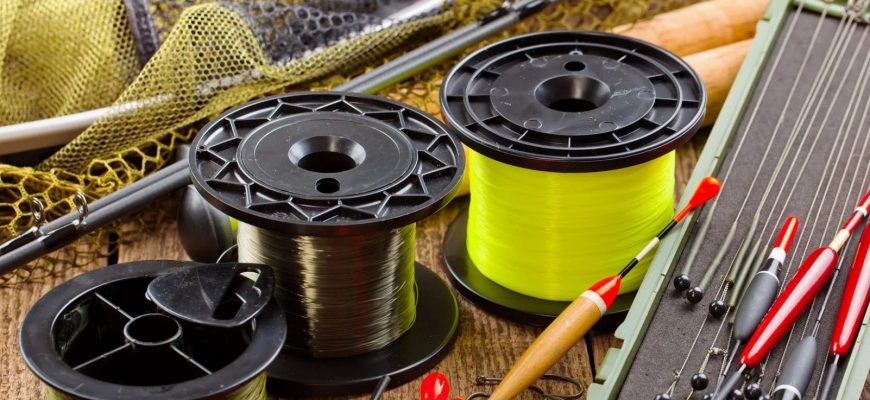Fishing line is a crucial component of any fishing setup. The right line can make the difference between landing a big catch or losing it. With so many types of fishing lines available on the market, it can be overwhelming to choose the right one for your needs. In this article, we’ll discuss the different types of fishing lines and how to choose the right one for your needs.
- Types of Fishing Lines
- Monofilament
- Fluorocarbon
- Braided
- Factors to Consider When Choosing Fishing Line
- Fishing Conditions
- Fish Species
- Fishing Technique
- Line Strength
- Tips for Choosing the Right Fishing Line
- Check the Pound Test
- Consider the Fishing Location
- Choose the Right Diameter
- Know the Fishing Technique
- Consider the Weather Conditions
- Conclusion
Types of Fishing Lines
Monofilament
Monofilament lines are made of a single strand of nylon, which makes them inexpensive and easy to handle. They have a high level of stretch, which can be an advantage when fishing with live bait, but a disadvantage when fishing with lures. Monofilament lines also have a relatively high visibility, which can spook fish in clear water.
Fluorocarbon
Fluorocarbon lines are made of a polymer that is virtually invisible underwater. They have low visibility, making them an excellent choice for clear water fishing. Fluorocarbon lines also have low stretch, which makes them more sensitive than monofilament lines. They are more expensive than monofilament lines, but their benefits often outweigh the cost.
Braided
Braided lines are made of multiple strands of synthetic fibers. They have virtually no stretch, which makes them an excellent choice for fishing with lures. They also have a small diameter, which means they can be spooled onto a reel with more line than monofilament or fluorocarbon lines. Braided lines are durable, but they can be difficult to handle and can be visible in clear water.
Factors to Consider When Choosing Fishing Line
Fishing Conditions
The fishing conditions will determine the type of line you need. For example, if you’re fishing in clear water, a fluorocarbon line is the best choice because it has low visibility. If you’re fishing in rough conditions, a braided line is the best choice because it is more durable.
Fish Species
The fish species you’re targeting will also play a role in your choice of fishing line. For example, if you’re targeting a fish species that has sharp teeth, such as a barracuda, you’ll need a line that is abrasion-resistant. If you’re targeting a fish species that is sensitive to line visibility, such as trout, you’ll need a line with low visibility.
Fishing Technique
The fishing technique you’re using will also determine the type of line you need. For example, if you’re using live bait, a monofilament line is the best choice because it has a high level of stretch. If you’re using lures, a braided line is the best choice because it has no stretch, which allows for better lure control.
Line Strength
Line strength is measured in pounds, and it determines the maximum weight that the line can handle before breaking. When choosing a fishing line, it’s important to consider the maximum weight of the fish species you’re targeting. A line that is too weak will break under the weight of the fish, while a line that is too strong can be too visible in clear water.

Tips for Choosing the Right Fishing Line
Now that we’ve discussed the different types of fishing lines and factors to consider when choosing one, here are some additional tips to keep in mind:
Check the Pound Test
Before buying a fishing line, check the pound test on the packaging. This number refers to the amount of weight the line can handle before breaking. Make sure you choose a line that can handle the weight of the fish you’re targeting.
Consider the Fishing Location
Different fishing locations require different types of fishing lines. For example, if you’re fishing in a lake with clear water, choose a fluorocarbon line. If you’re fishing in a river with heavy cover, choose a braided line.
Choose the Right Diameter
The diameter of the fishing line affects its visibility and sensitivity. A thinner line is less visible but may not be strong enough for bigger fish. A thicker line is more visible but can be more difficult to handle. Choose a diameter that balances visibility and strength for your specific needs.
Know the Fishing Technique
Different fishing techniques require different types of fishing lines. For example, if you’re using a spinning reel, a monofilament or braided line is the best choice. If you’re using a baitcasting reel, a braided line is the best choice.
Consider the Weather Conditions
Weather conditions can affect the performance of your fishing line. For example, in windy conditions, a heavier line may be necessary to maintain control. In hot weather, a thinner line may be more prone to breaking due to the heat.
Conclusion
Choosing the right fishing line is essential to a successful fishing trip. When considering the type of fishing line to use, take into account the fishing conditions, fish species, fishing technique, and line strength. Whether you choose a monofilament, fluorocarbon, or braided line, each type has its unique advantages and disadvantages. With the right fishing line, you’ll be able to land the big catch you’ve been dreaming of.
